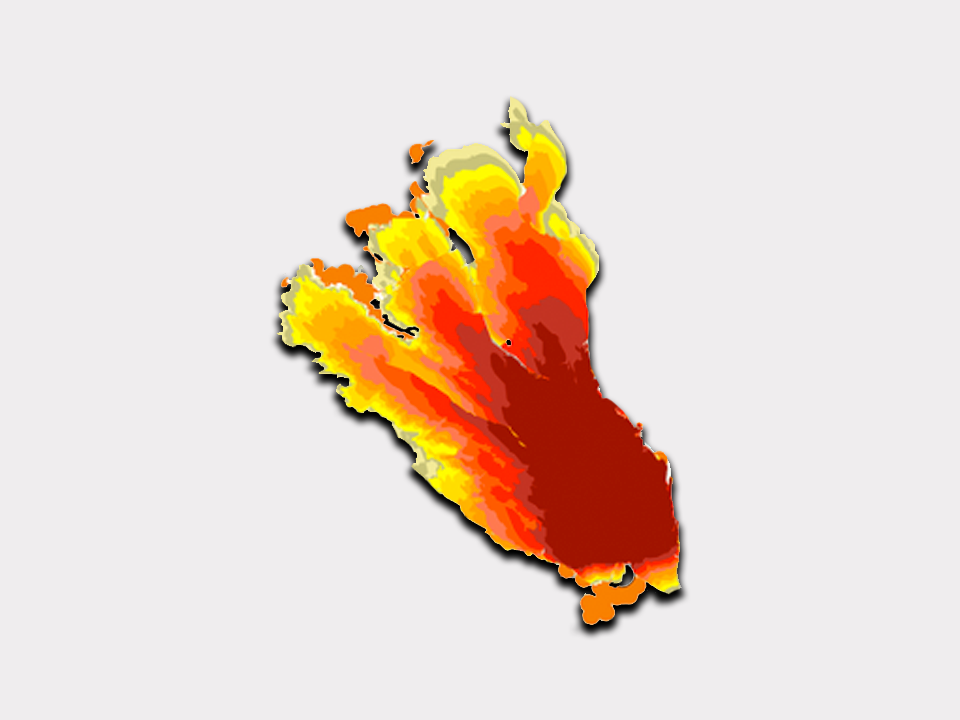Local flame attachment and heat fluxes in wind-driven line fires
Wei Tang, Colin Miller, Michael Gollner (2016), "Local flame attachment and heat fluxes in wind-driven line fires." Proceedings of the Combustion Institute, 36(2), 3253-3261. http://dx.doi.org/10.1016/j.proci.2016.06.064
Abstract
A detailed experimental investigation of turbulent diffusion flames under forced flow was conducted to study local heat fluxes to a nearly adiabatic surface downstream of a gaseous line burner. A variety of ambient wind velocities and fuel flow rates were employed to study different fire scenarios modeling the dynamics of wind-driven fire spread as found in wildland, mine or tunnel fires. The downstream heat flux distribution was correlated as a piecewise function with the Richardson number in two regimes, the first with higher heat fluxes, where the flame remained attached the downstream surface (attached region) and the second with a steeper decay of heat fluxes (plume region). Analysis of the heat flux distribution revealed that local heat fluxes roughly reach a maximum where the Richardson number equaled unity. This was thought to be a good marker of the regime where the flame detaches from the surface, e.g. where buoyancy from the flame overcomes inertial forces from the oncoming flow. This observation was further corroborated by analysis of side-view images of the flame, which showed the attachment location was linearly correlated with the location where the Richardson number equaled unity. The results from this study suggest that local heat flux values reach a maximum at the transition between a momentum-dominated (attached, wind-driven) to buoyancy-dominated (plume or fire) regime in forced flow scenarios. The results have interesting implications to the problem of flame attachment, which is known to accelerate fire spread in both inclined and wind-driven fire scenarios.


